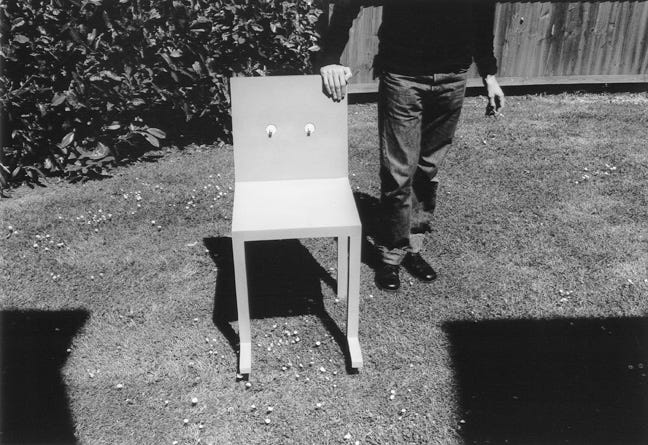#4 Talking to babies, nipple chairs & craftsmanship
Happy Friday people. Welcome to the 4th edition of Design Lobster. It’s a a weird one today. Buckle up. 😬
Question: How might babies communicate with us?
Name truly any problem and I can guarantee some bemused team of designers are working on it somewhere in the world. A Japanese company called First Ascent launched the CryAnalyzer Auto at the Consumer Electronics Show last in Vegas month. Consisting of a pillow microphone and smartphone app, they claim to be able to use AI to tell you if your baby is hungry, angry, sleepy, uncomfortable or bored.
Having several nephews and nieces I have noticed their mothers (and fathers) have a pretty strong instinct when it comes to these five emotions so I wonder how helpful getting a statistical guess from a machine would be in most situations. On their App Store page First Ascent emphasise the moments when your baby is crying and you don’t know what to do which seems pretty directly addressed at new parents searching frantically for help at 3am. I just hope it aids them developing their instinct, rather than becoming a robotic substitute for it.
Design takeaway: How does your design fit in with your user’s existing behaviour and skills? Does it help them to improve?
Hear the wails here.
Object: Nipple Chair
Some of you may recognise this 2001 project by Critical Design celebrity duo Fiona Raby and Anthony Dunne. A simple wooden chair with two plastic nipples in the back seat which use some simple sensors to vibrate when electromagnetic radiation passes through the sitter’s upper body. It’s a strange and curiously erotic piece.
Dunne and Raby talk about using design as a tool for debate or for investigating the consequences of an idea.
The kind of pleasures you get from reading a book or watching a film, I think are the kinds of things we’re trying to explore in relation to products.
In this case, they wanted to investigate the increasing pervasiveness of devices operating on some part of the electromagnetic spectrum. Instead of writing about it, or making a film they designed a family of products you could use with your body to reach a less abstract understanding of the issues at stake.
Design takeaway: What hidden forces can you reveal in your design?
More from Dunne & Raby’s website here.
Quote: “Three basic abilities are the foundation of craftsmanship. These are the ability to localise, question and open up. The first involves making a matter concrete, the second reflecting on its qualities, the third expanding its sense.
– Richard Sennett, The Craftsman
Overall, I found this book is hard going (sorry Richard). But it contains some real pearls like this. Relevant to anyone trying to bring some more craft to their activities, from jewellers to writers to parents. The process of getting into the detail of something something then exploring its possibilities is (also) what this newsletter is all about.
Keep crafting. 🦞
PS.
How to stop vehicles honking in Delhi.
Enjoying Design Lobster? Tell a friend.
Has this email been forwarded to you? Sign up below.





